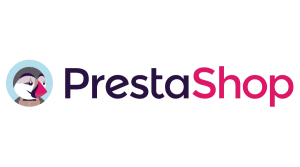It is easy to build an eCommerce Website. Thanks to modern tools and solutions, everybody can launch their ecommerce website without knowing design or coding.
You have to decide on a couple of things before setting up your web shop; matters like what you’re going to sell, how to handle shipping and payments, and what marketing strategies to use.
Guide for Creating an Online eCommerce Website
Follow our step-by-step online store building guide and you learn how to start an ecommerce website quickly from scratch.
Decide What You Want to Sell
The first step that’s an absolute must-do is to pick your niche. As it’s often defined, a niche is a specific piece of a broader market.
Sorry if this sounds a bit too dictionary-like. Let’s break it down into simpler terms. Basically, when picking your niche, you have to decide:
What do you want to sell?
Who are you going to sell it to?
Why would they buy it?
These three questions may seem fairly obvious, but they’re actually far from.
Defining your ideal customer base and figuring out why they would buy from you will make your job much easier later on. The main mistake that people make is going too broadly in the hope that the bigger the potential market is, the more likely they are to get good sales. This is not correct.
If your target customer base is simply “people who breathe” then you’re going to have a hard time positioning your product in the market, promoting it, and explaining what’s so valuable about it.
Overall, focusing on one niche is better than going all over.
Choose Between DropShipping and Selling Your Own Products.
The traditional way of running an online eCommerce website. In this model:
(1) you get products from the supplier or create them yourself → (2) you offer those products to customers via your website → (3) the customer buys the product → (4) you send the product to them
Here’s the dropshipping model:
(1) you start by listing the products on your website → (2) the customer buys the product → (3) the supplier sends the product directly to the customer.
The main benefit of the dropshipping model is that you don’t have to hold any inventory yourself. This means that there’s no cost involved in making the products or storing them. In fact, everything you sell is pure profit since you only have to pay the supplier after you receive an order from your customer.
In the traditional model, you have to shell out money upfront to either obtain products from the supplier or get them created. You must do that before you can ever start selling them.
On the other hand, dropshipping won’t be for you if the products you want to sell are of your own production or need to be customized/personalized before they can be sold.
Overall, if you can, opt for dropshipping – and especially if it’s your first attempt to start an online store. Dropshipping is a great way to test the waters and validate that the products you want to sell are indeed something that customers will want to buy. Then, later on, you can expand and start offering your own products as well.
Choose the Exact Products to Sell?
One of the great things about dropshipping is that there’s an abundance of different products to choose from in nearly every niche.
This is excellent news for businesses that are just getting started and don’t want to invest in their own product development. The overall steps are:
Research your niche. Examine what sort of products your competitors are selling, and what their best-selling products are.
Go to content sites on the web to find what type of challenges, products, or things in general your target audience reads about.
Go to niche-related forums and see what your customers talk about.
Search on Google with keywords most relevant to your niche.
Go to Amazon and do similar research. See what products sell well.
With all this research, you can now go to some popular markets and start looking for specific products you can sell.
We recommend getting started with between 10-50 products. This will give you more than enough stuff to make your store complete and also not overwhelm you with what’s going on as you work with the store on a daily basis.
When you’re putting together a list of products, keep the following things in mind:
Make sure that the product is available for shipping in locations where your target audience is. Also, the lower the shipping costs, the better.
Check the shipping times and make sure they don’t exceed what you would consider acceptable (we leave deciding what’s acceptable and what isn’t to your judgment).
If possible, avoid brand name products (you don’t want to depend on being able to sell Adidas sneakers, for instance).
It’s a common practice for dropshipping stores to set their margins at around the 50% mark. Meaning, when looking for products to sell, focus on the ones that are half the price compared to what you want to sell them for.
As we mentioned earlier, having a list of 10-50 products is suitable for a start. We’ll use that list later on when importing the products to your actual online store.
Come Up With a Business Name and Register a Domain Name?
Choosing a name for your store is undoubtedly the most fun part of the whole endeavor. People love to name things. Especially businesses.
However. The name you end up with can have a lot of significance for your future success and ability to market the business effectively. Here are the things to keep in mind when brainstorming a business name:
Pick a Name That’s Easy to Pronounce
Imagine yourself talking to someone over the phone and needing to mention the name of your store. Do you have to spell it out for the other person to understand?
If you do, the name is too complex. Go for something simple and easy to pronounce on the first go.
Pick a Name That’s Easy to Memorize
This relates to the previous point, somewhat. Apart from being easy to pronounce, your name also needs to be easy to memorize.
You can achieve this in a couple of ways. Going with a completely made-up word as your name is one solution (think “Google”). Alternatively, you can put together two words that do have real meanings but create something original when put next to each other (think “Face-book”).
Pick a Name That’s Brandable
Your name should be original enough so that people won’t mistake it for any other similar business.
For example, if you want to name your pizzeria “Pizza Den” but there’s another business in town called “Pizza Pan” then it’s not a good name.
Pick a Name That’s Short(ish)
Not longer than a combination of 2-3 words.
Any longer and it’s going to be harder to remember and less brandable.
Don’t Use Any Special Characters Or Numbers
Also forget about dots, underscores, dashes, etc.
Pick a Name That is Available as a .com Domain
The .com is the most popular and most important domain name extension of the bunch. If you’re brainstorming a name, don’t go for something that doesn’t have a .com domain available.
You can check if your dream domain name is available below:
Start an Online eCommerce Website By Yourself
Finally, it’s time to build an actual ecommerce website.
Here’s the best part: you can do it all on your own, there’s no professional help needed, and you don’t have to sacrifice the quality of the final outcome. Read: your online store is going to be just as functional and just as good-looking as if it was built by a pro.
1) Go to NR Hosting Ltd and Sign Up for Web Hosting
2) Install WordPress
WordPress is an operating system for websites. It’s open-source, powerful, and easy to work with. We’re going to use it as the foundation for your store.
See this complete guide how to install wordpress.
3) Install WooCommerce
WooCommerce is a plugin for WordPress that extends it with the eCommerce functionality. This is the key plugin that will essentially allow you to start an online store. It is also free and open-source, much like WordPress itself.
To install it, log in to the WordPress admin panel and go to Plugins → Add New (from the sidebar menu).
Type in “WooCommerce” into the search field, and install and activate the plugin.
WooCommerce will then take you by the hand through the initial setup required to get your store going.
4) Add Your Products
At this stage, it’s time to add your first products to the store’s catalog.
If you’re going to be offering your own products, you can add those in Products → Add Product. You’ll see he following screen:
add product
There’s space here for your product name, description, and also all the other details like the price and shipping info.
If you’re going to dropship, you need to install an additional plugin, which will let you import products from suppliers. One of the better solutions for new stores is Dropship.me. You can start using it for free, and can then choose to upgrade to a paid plan if you want to import more products.
After you install Dropship.me, you’ll get access to more than 50,000 dropshipping products from markets like AliExpress.
5) Choose a Theme
The last step is picking a theme (a design package) for your online store.
The great thing about WordPress is that there are thousands of themes for it throughout the web.
That being said, we want to highlight three themes that come with their specific benefits:
Storefront. This is the official theme for WooCommerce. It has all the basic features and is easy to start with. The design is a bit basic, but it might be what you want.
Neve. A great-looking theme that works out the box and comes with a design optimized to work on an eCommerce store.
Astra. A swiss-army-knife type of theme that comes with a ton of starter sites and settings for you to dive into. If you like to tinker with things, use that one.
6) Set Up Payment Methods
The last piece of the puzzle when attempting to start an online store is accepting payments from customers.
By default, WooCommerce allows you to accept payments via PayPal. You don’t need to do much in order to enable this payment system either. You likely already took care of it during the initial WooCommerce setup.
That said, you can choose a different payment system, or even use a couple of alternative systems at the same time. One of the reasons for this might be that some of your customers will prefer specific payment methods over others. So the more of them you have integrated into your store, the more sales you’ll get.
Two of the most popular additional payment methods for WooCommerce are Stripe and Square. These are particularly good choices if you want to accept credit cards (which you surely do).
7) Start Marketing Your Online Store
There are many different things you can do to get the word out about your store, but we’re going to focus on just four here – the four that are the most likely to work in 2020 and going forward.
Influencer Marketing
Influencer marketing is a relatively new way to promote your store. Most of it is done on Instagram.
The way it works is this:
Find people popular in your niche or recognizable for whatever reason.
Reach out to them and ask what their rates are for promoting products like yours. Also, pay attention to the size of their following and ask about the number of engagements they get under similar posts.
Agree on a run of two or three promotional posts, and send them your products.
Paid Ads
Paid ads basically don’t ever fail. If there’s a market for something, and you target that market with ads, you will get some sales.
The most popular platform for advertising your products is Google AdWords. Getting started with them is relatively easy, and Google has its own guides to take you through the initial steps.
Social Media Marketing
While Instagram certainly is the most on-trend social media network of today, this doesn’t mean that it’s the only place where you should promote your store.
In fact, you should be present in all the places where your customers are likely to hang out. This, in the modern-day, means most of the popular social media networks. Or, at the very minimum, the top ones like Facebook, Twitter, and optionally Pinterest (if your customers use it).
Your approach to all these networks will be similar, but the goals and the way you construct your messages will be different.
The first thing you should do is research what your competition is doing and how they go about promoting their stores. Take note of their strategies and tactics, and see what you can adapt to your situation. Chiefly, pay attention to:
the type of messages they post
the posting frequency
how often they promote their products directly
what’s their general voice and how their messages make you feel
Next, set your own goals as to what you want to achieve through social media.
Most commonly, those goals should be building brand awareness among customers, and only occasionally promoting your products and trying to generate direct sales. If you push your stuff too much, you’ll alienate people quickly.
The next step is setting a publication calendar in place and preparing some social media posts in advance. You can then publish those posts with the help of tools like Buffer.
Content Marketing and SEO
Nowadays, content marketing and SEO are the most effective methods to promote any website (including eCommerce stores).
The idea behind content marketing is simple: you give people insights on topics related to your business and thus generate interest in what you have to offer.
For example, if your store sells winter socks, then you can offer people advice on things like how to pick ski socks. You can deliver that advice in the form of a simple blog post. As people read your content, they also get introduced to your store and the socks that you have in your catalog.
The same principle can be adapted to any market or niche. Find out what people want to know and then create content that delivers that info to them.
When doing so, optimize your content so that it’s more discoverable via Google. It’s reported that Google is responsible for 94% of total organic traffic on the web.
Summary
As you can see, starting an online store is not that difficult of a task after all. All you need to launch your store quickly is plan out your steps, and take advantage of modern tools like WordPress and WooCommerce.
Just to recap, here are all the steps once again:
Decide what you want to sell
Choose between dropshipping and selling your own products
Choose the exact products to sell
Come up with a business name and register a domain name
Start an online store website by yourself
Set up payment methods
Start marketing your online store








